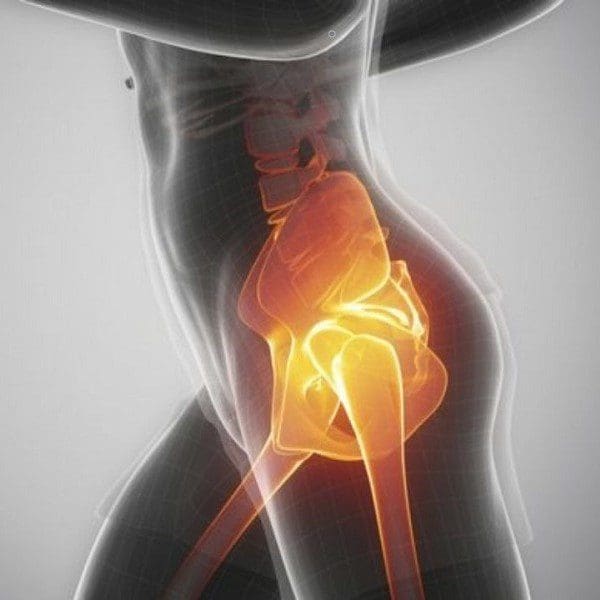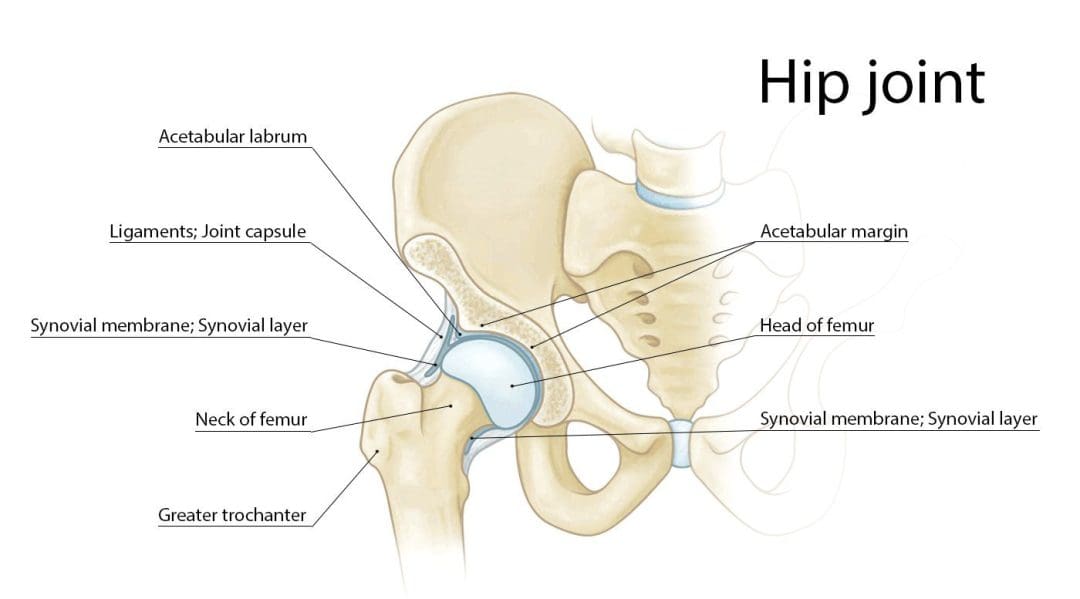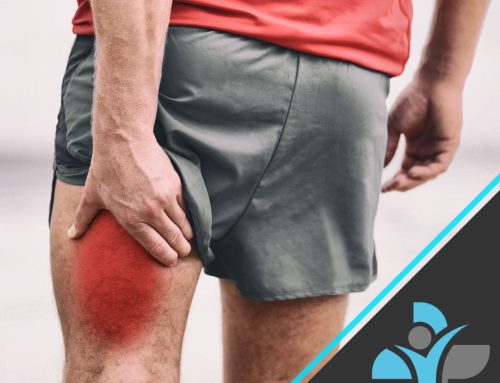
Overview
Hip labrum impingement may occur when the ball and socket joint is unable to move smoothly within the joint. It is more frequently known as Femoral acetabular impingement (FAI). The ball and socket joint are lined with a layer of cartilage that assists in cushioning the femur bone into the socket, which allows free movement no grinding or rubbing within the joint, resulting in no pain. It is also lined with a ridge of cartilage called the labrum, this will keep the femoral head in its place inside the hip socket enabling extra stability.
Anatomy
The hip is a synovial joint more so known as a ball and socket joint. The ball of the joint is the femoral head (the upper part of the femur) more commonly known as the thigh bone. Within the socket is the acetabulum which is surrounded by the pelvis, this makes up the joint.
The surface of the ball and socket is protected by articular cartilage. This enables the bones in and around the joint to glide easily when performing everyday movements such as walking. The cartilage also helps prevent any friction around the surface of the joint avoiding any sort of impingement. Another feature around the joint is the hip labrum. This fibrocartilage labrum is found within the acetabulum, this enables stability to the joint as the hip has a large range of motion in movements such as flexion, extension, abduction, adduction and rotation.

Causes
Common causes of hip impingement are triggered by the femoral head being covered too much by the hip socket. Repetitive grinding at this joint leads to cartilage and labral damage, causing the feeling of impingement.
Other factors that may affect an individual to suffer with labrum impingement could be that individual may have been born with a structurally abnormal ball and socket joint. Also, movements that involve repetition of the leg moving into excessive range of motion may aid in the injury of hip labrum impingement.
Symptoms
Some common Hip Labrum impingement symptoms are as follows:
- Stiffness in the hip or groin region
- Reduced flexibility
- Pain when performing exercise such as running, jumping movements and walking
- Groin area pain, especially after the hip is placed into flexion
- Pain in surrounding areas such as lower back and the groin
- Pain in the hip even when resting
Causes
When you go to visit your doctor/ health care professional about hip complications they may talk about two main types of hip impingement:
- Cam impingement
- Pincer impingement
Cam impingement “occurs because the ball-shaped end of the femur (femoral head) is not perfectly rounded. This interferes with the femoral head’s ability to move smoothly within the hip socket”.
Pincer impingement “involves excessive coverage of the femoral head by the acetabulum. With hip flexion motion, the neck of the femur bone “bumps” or impinges on the rim of the deep socket. This results in cartilage and labral damage”.
Unfortunately, both these two types can happen at the same time, more so known as combined impingement. Which may cause an individual to experience a lot of pain and discomfort.
Diagnosis
The diagnosis of hip impingement will be given by a doctor based on how you describe your symptoms and after performing a physical examination of the hip. Some imagining tests may also be performed such as:
- X-Ray – The X-Ray screening may show an irregular shape of the femur bone at the top of the thigh or too much bone around the rim of the hip socket, thus causing the impingement
- MRI Scans – This may pick up wear and tear of the cartilage which runs along the hip labrum
- CT scans may also be performed
Treatment
A passive motion special test that is commonly used for hip impingement is called the FADIR (flexion, adduction and internal rotation). This is where the patient will lie in supine position (on their back) with the legs relaxed, then the doctor will carry out the test:
- The affected leg will be raised so that the knee and hip are at a 90-degree angle
- The doctor will support the knee and ankle and gently push the entire leg across the midline portion of the patient’s body moving into adduction
- Then whilst keeping the knee in position, the doctor would move the foot and lower calf away from the body into abduction
People who are suffering with hip impingement would feel pain during stage 3 of the test, however it may be hard to differentiate between each injury as someone not suffering with impingement may still feel pain, so it is always important to test the unfaceted side for a comparison.
Exercises
- Hip flexor stretches
- Piriformis stretches
- Isometric hip raises in abduction
- Glute bridge
- Single leg bridge
- Straight leg raises (can also use resistance band)
Prevention
- When exercising avoid placing full body weight onto your hip when the legs are positioned in excessive range of motion
- Do daily stretches morning and night
- Always rest when needed
- Perform rehabilitation exercises given by a physiotherapist



